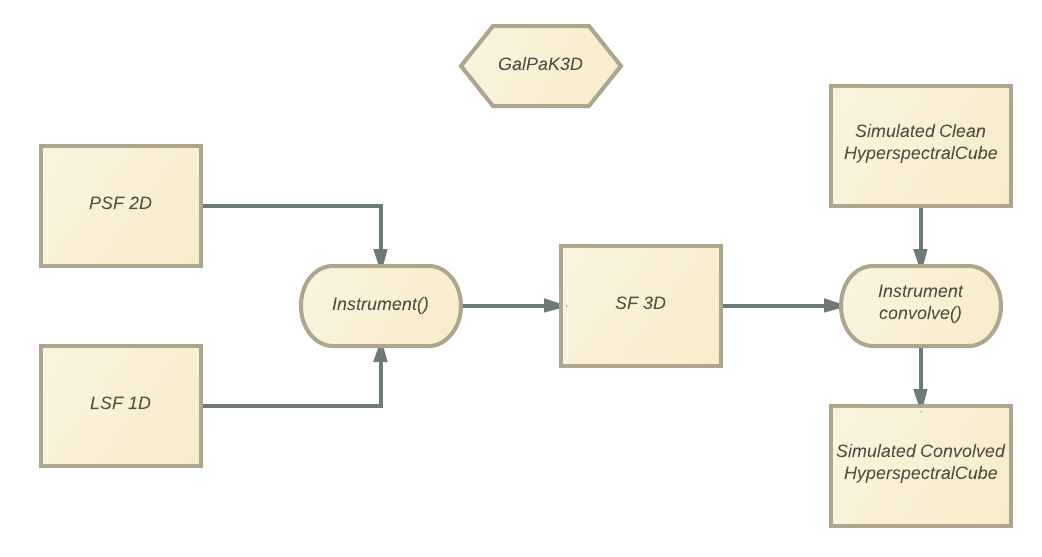Instruments¶
Overview¶
GalPaK uses a virtual Instrument
to convolve the simulation cubes and check against observed data.
As each instrument has its own tweaks and quirks (both hardware and atmospheric),
you can provide an instrument to GalPaK3D,
the default one being MUSE in Wide Field Mode :
from galpak import run, SINFOK250
gk = run('my_sinfok250_cube.fits', instrument=SINFOK250())
Here are the available instruments :
Note
These instruments are objects, not string literals!
Notice the parentheses : SINFOK250().
The spectral characteristics (pixel cdelt, etc.) are re-calibrated using the Cube’s header when you instantiate GalPaK.
Pay attention in defining most appropriate values for the seeing or psf_fwhm(“)
– psf_ba if not round – and lsf_fwhm (in units of cube) parameters.
All of them by default use the gaussian PSF GaussianPointSpreadFunction.
Base Instrument Class¶
-
class
galpak.Instrument(psf=None, lsf=None)[source]¶ This is a generic instrument class to use or extend.
- psf: None|PointSpreadFunction
- The 2D Point Spread Function instance to use in the convolution, or None (the default). When this parameter is None, the instrument’s PSF will not be applied to the cube.
- lsf: None|LineSpreadFunction
- The 1D Line Spread Function instance to use in the convolution, or None (the default). Will be used in the convolution to spread the PSF 2D image through a third axis, z. When this parameter is None, the instrument’s PSF will not be applied to the cube.
-
convolve(cube)[source]¶ Convolve the provided data cube using the 3D Spread Function made from the 2D PSF and 1D LSF. Should transform the input cube and return it. If the PSF or LSF is None, it will do nothing.
Warning
The 3D spread function and its fast fourier transform are memoized for optimization, so if you change the instrument’s parameters after a first run, the SF might not reflect your changes. Delete
psf3dandpsf3d_fftto clear the memory.cube: HyperspectralCube

